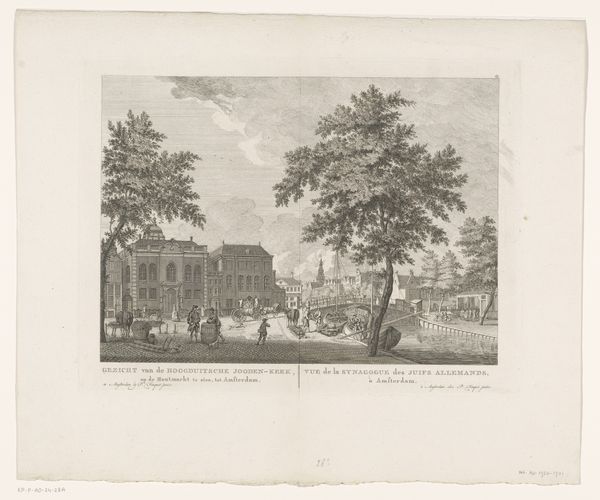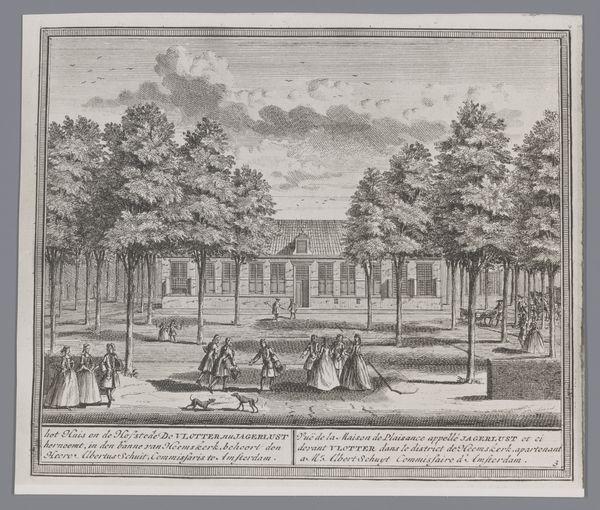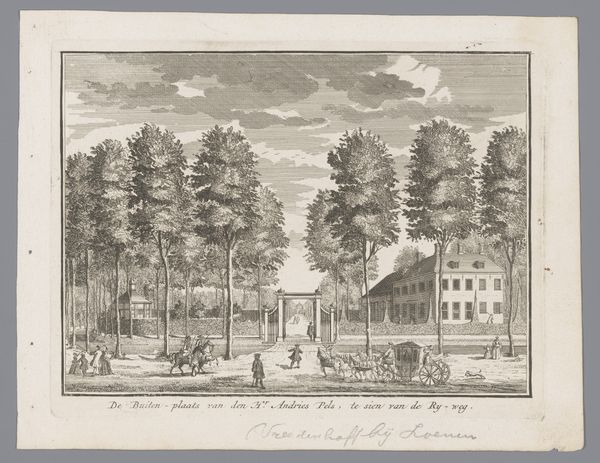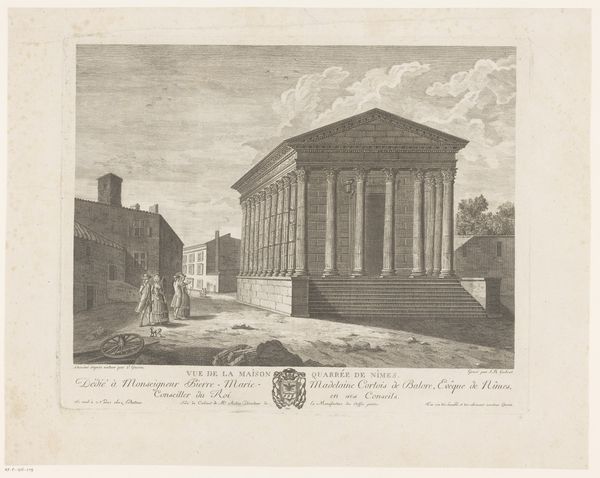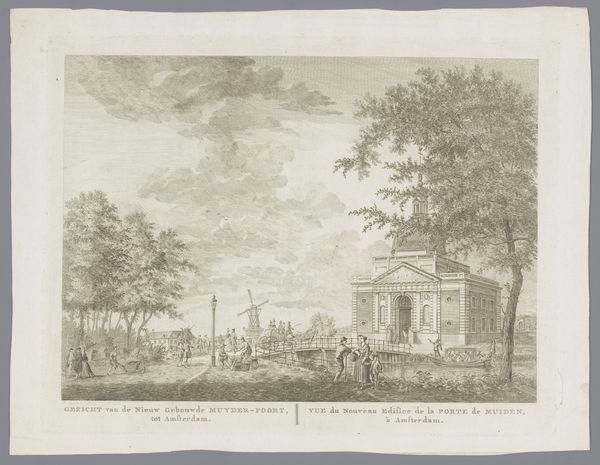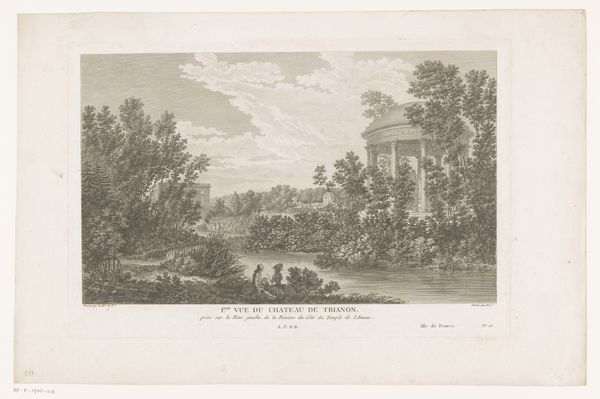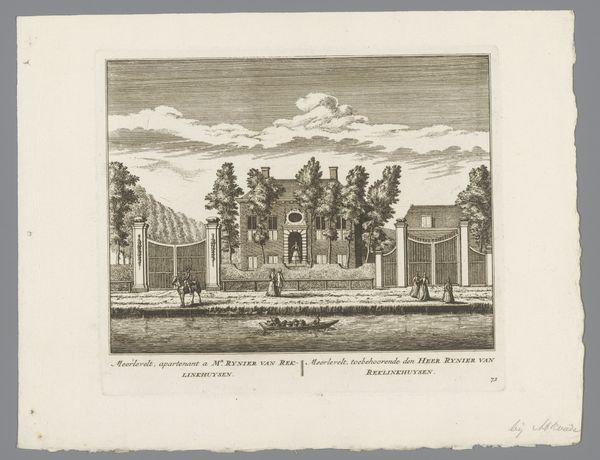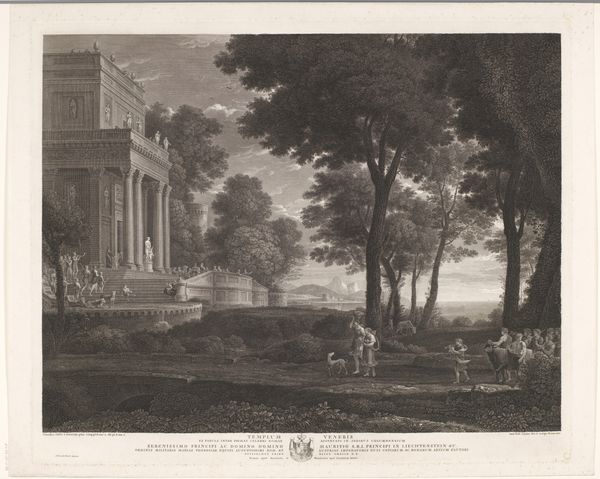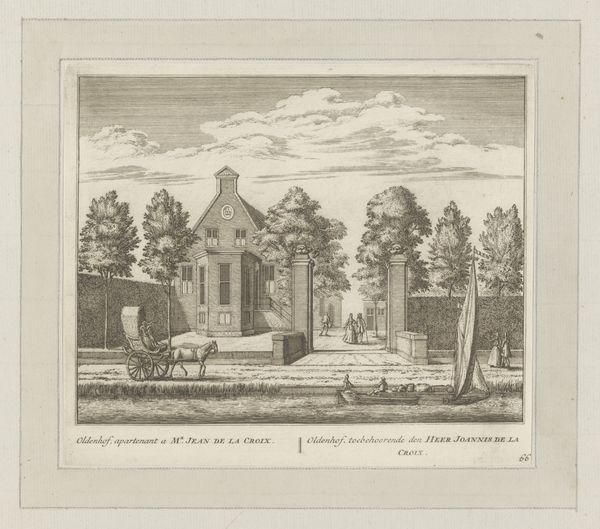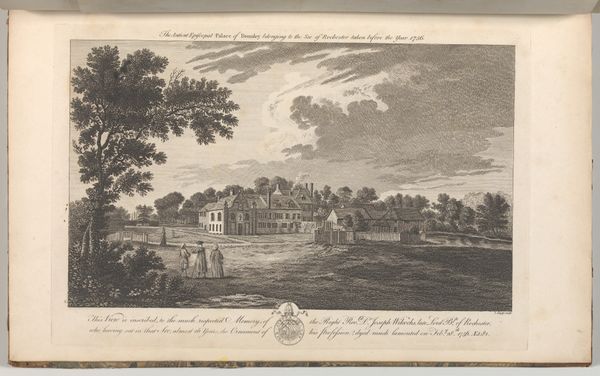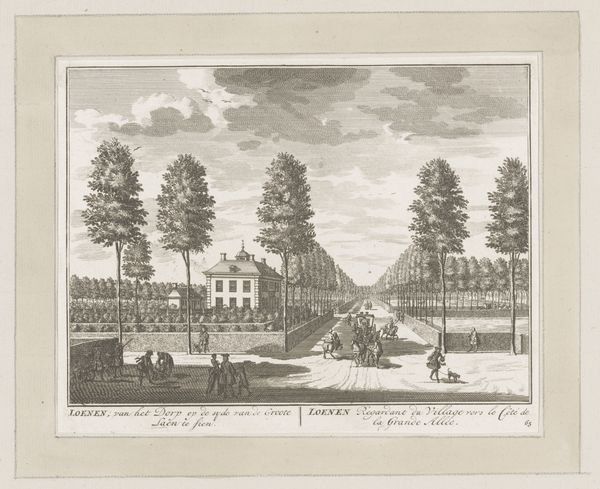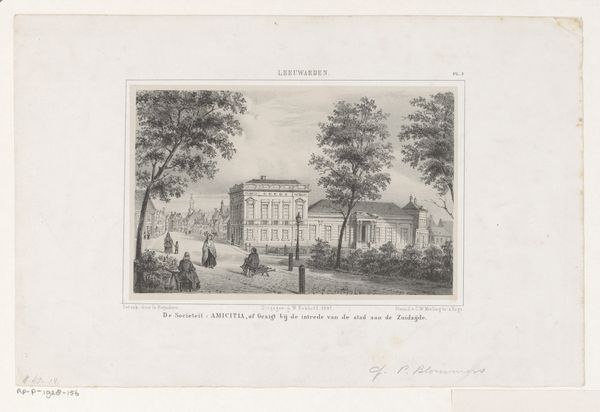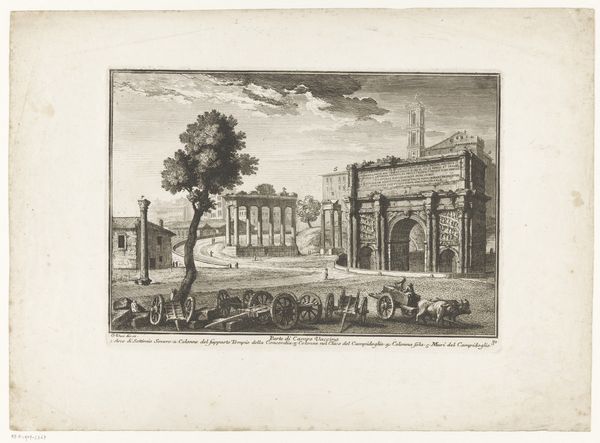
drawing, print, etching, pencil, engraving
#
drawing
#
neoclacissism
# print
#
etching
#
landscape
#
pencil
#
line
#
cityscape
#
engraving
Dimensions: height 220 mm, width 291 mm
Copyright: Rijks Museum: Open Domain
Editor: This etching, “View of the Brandenburg Gate” by Peter Haas, dates from around 1791 to 1804. There’s a kind of detached, almost clinical feel to the image, despite the figures populating the foreground. How do you interpret this work? Curator: The Gate stands as more than just a pretty backdrop, doesn't it? Neoclassicism in art was often employed to project ideas of order, reason, and civic virtue – ideals very much in line with the Enlightenment and often used to visually reinforce political power. Editor: So, you’re suggesting it's not just a landscape, but a statement? Curator: Exactly. Think about what this gate symbolized then, and what it symbolizes now. It has been a backdrop for parades of power, and later a potent symbol of reunification after division. To me, this seemingly simple print hints at the complex relationship between architecture, power, and the ever-changing social landscape. What do you think of the role the people play? Editor: They almost seem like an afterthought. Little figures neatly arranged, not really interacting. Is that deliberate? Curator: Perhaps. It underscores the imposing nature of the architecture itself. Their presence makes a stark comparison, the scale of the gate dominates, doesn't it? Is it celebrating the public space for everyone or is it subtly emphasizing control and order? Editor: It's fascinating to consider the multiple layers of meaning in what seems like a straightforward image. I never thought about Neoclassicism being used in that way before. Curator: Art often acts as a mirror to society's values and power structures. By interrogating historical contexts, we reveal their continued influence today.
Comments
No comments
Be the first to comment and join the conversation on the ultimate creative platform.
